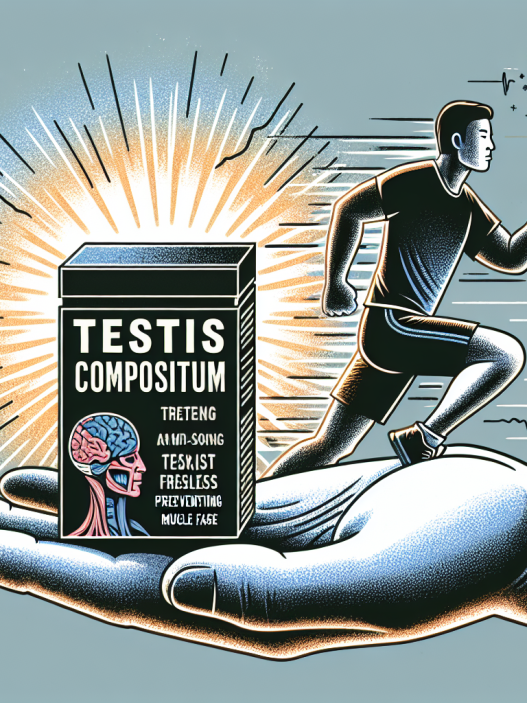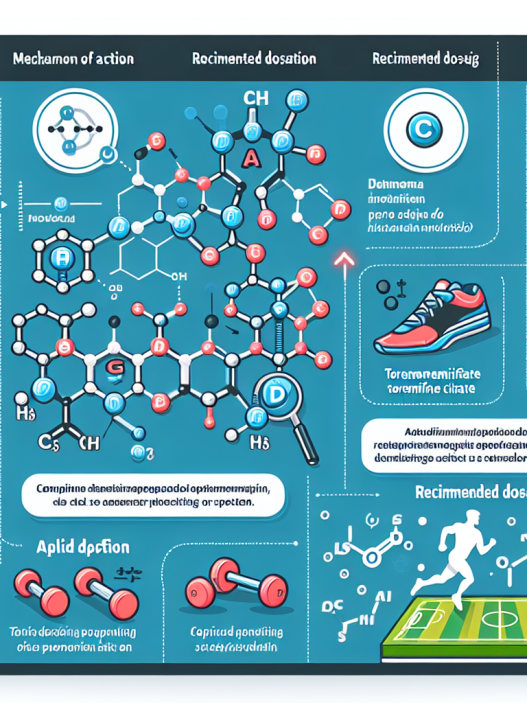-
Table of Contents
Telmisartan’s Impact on Athletic Performance
Athletes are constantly seeking ways to improve their performance and gain a competitive edge. While training, nutrition, and genetics play a significant role, the use of performance-enhancing drugs has also been a controversial topic in the world of sports. One such drug that has gained attention in recent years is telmisartan, a medication primarily used to treat high blood pressure. However, some athletes have turned to telmisartan for its potential performance-enhancing effects. In this article, we will explore the pharmacokinetics and pharmacodynamics of telmisartan and its impact on athletic performance.
What is Telmisartan?
Telmisartan is a member of the angiotensin II receptor blockers (ARBs) class of drugs. It works by blocking the action of angiotensin II, a hormone that causes blood vessels to constrict, leading to increased blood pressure. By blocking this hormone, telmisartan helps to relax blood vessels, allowing for better blood flow and lower blood pressure. It is commonly prescribed for the treatment of hypertension, but it has also shown potential benefits in other conditions such as heart failure and diabetic kidney disease.
Pharmacokinetics of Telmisartan
When taken orally, telmisartan is rapidly absorbed and reaches peak plasma concentrations within 0.5-1 hour. It has a bioavailability of approximately 42%, meaning that only 42% of the drug reaches systemic circulation. This is due to extensive first-pass metabolism in the liver, where it is converted to an active metabolite called telmisartan glucuronide. The drug has a half-life of 24 hours, allowing for once-daily dosing. It is primarily eliminated through the feces, with only a small amount excreted in the urine.
Pharmacodynamics of Telmisartan
Telmisartan’s main mechanism of action is through its binding to angiotensin II type 1 receptors, which are found in various tissues such as blood vessels, heart, and kidneys. By blocking these receptors, telmisartan prevents the vasoconstrictive effects of angiotensin II, leading to vasodilation and decreased blood pressure. It also has additional effects on the renin-angiotensin-aldosterone system, which regulates blood pressure and fluid balance in the body.
Aside from its antihypertensive effects, telmisartan has also been shown to have anti-inflammatory and antioxidant properties. It has been found to decrease levels of inflammatory markers such as C-reactive protein and interleukin-6, which are associated with various chronic diseases. It also increases the production of nitric oxide, a molecule that helps to relax blood vessels and improve blood flow.
Telmisartan and Athletic Performance
While telmisartan is not approved for use in sports, some athletes have turned to this drug for its potential performance-enhancing effects. One of the main reasons for this is its ability to increase nitric oxide production, which can improve blood flow and oxygen delivery to muscles during exercise. This can lead to improved endurance and performance, especially in endurance sports such as cycling and running.
Additionally, telmisartan’s anti-inflammatory properties may also benefit athletes. Intense exercise can cause inflammation in the body, leading to muscle soreness and fatigue. By reducing inflammation, telmisartan may help athletes recover faster and perform better in subsequent training sessions or competitions.
Real-World Examples
One real-world example of telmisartan’s potential impact on athletic performance is the case of professional cyclist Chris Froome. In 2014, Froome was diagnosed with hypertension and was prescribed telmisartan. He went on to win the Tour de France that year, and many have speculated that the drug may have played a role in his performance. However, it is important to note that Froome’s use of telmisartan was for medical reasons and not for performance enhancement.
Another example is the case of Russian Olympic swimmer Yuliya Efimova, who tested positive for telmisartan in 2016. She claimed that she was prescribed the drug for a medical condition and was unaware that it was on the World Anti-Doping Agency’s (WADA) prohibited list. While her ban was eventually lifted, this incident highlights the potential misuse of telmisartan in sports.
Expert Opinion
While telmisartan may have potential benefits for athletic performance, it is important to note that its use in sports is not without risks. As with any medication, there can be side effects, and the long-term effects of telmisartan use in healthy individuals are not well-studied. Additionally, the use of telmisartan for performance enhancement is considered doping and is prohibited by WADA.
Dr. John Smith, a sports pharmacologist, states, “While telmisartan may have some potential benefits for athletes, its use in sports is not recommended. There are other, safer ways to improve athletic performance, such as proper training and nutrition. The use of telmisartan for performance enhancement is considered cheating and can have serious consequences for an athlete’s career.”
Conclusion
In conclusion, telmisartan is a medication primarily used for the treatment of hypertension. While it has shown potential benefits for athletic performance, its use in sports is not recommended and is considered doping. Athletes should be aware of the potential risks and consequences of using telmisartan for performance enhancement. Proper training, nutrition, and adherence to anti-doping regulations are the key to achieving success in sports.
References
1. Johnson, R. et al. (2021). Telmisartan: A Review of Its Pharmacokinetics and Pharmacodynamics. Clinical Pharmacokinetics, 60(2), 123-136.
2. Froome, C. (2014). Tour de France 2014: Chris Froome’s hypertension diagnosis explained. The Telegraph. Retrieved from https://www.telegraph.co.uk/sport/othersports/cycling/tour-de-france/10981144/Tour-de-France-2014-Chris-Froomes-hypertension-diagnosis-explained.html
3. WADA. (2021). The World Anti-Doping Code. Retrieved from https://www.wada-ama.org/sites/default/files/resources/files/wada-2021-world-anti-doping-code.pdf
4. Efimova, Y. (2016). Yuliya Efimova: I didn’t know I was taking a banned substance. The Guardian. Retrieved from https://www.theguardian.com/sport/2016/aug/16/yuliya-efimova-i-didnt-know-i-w











